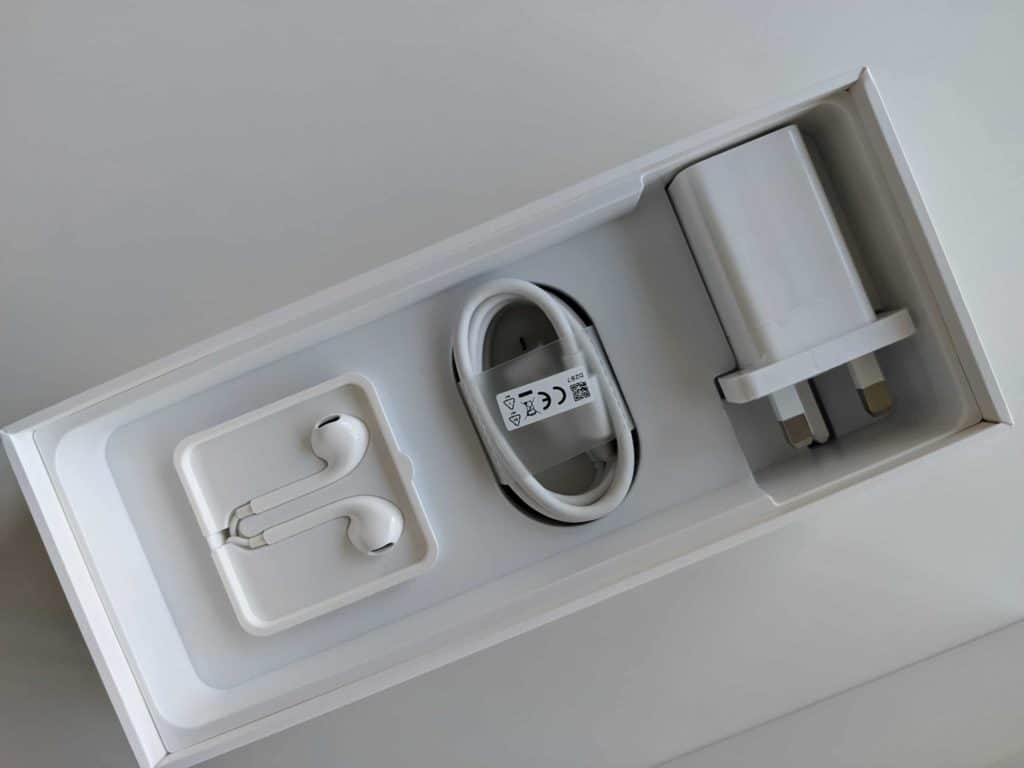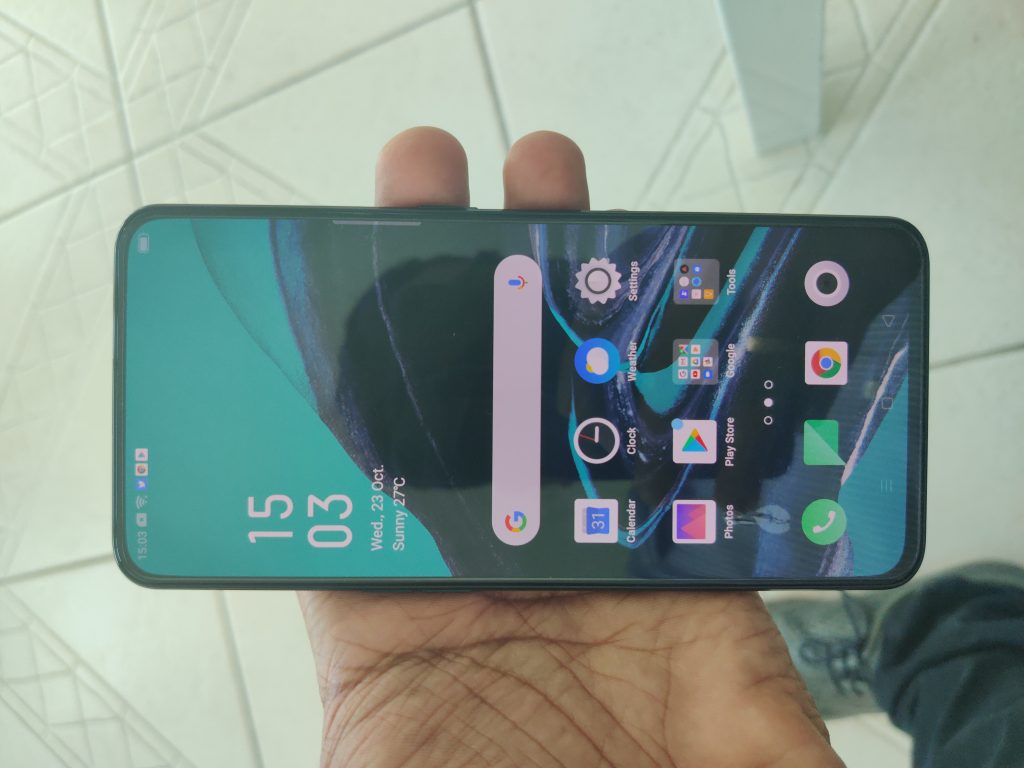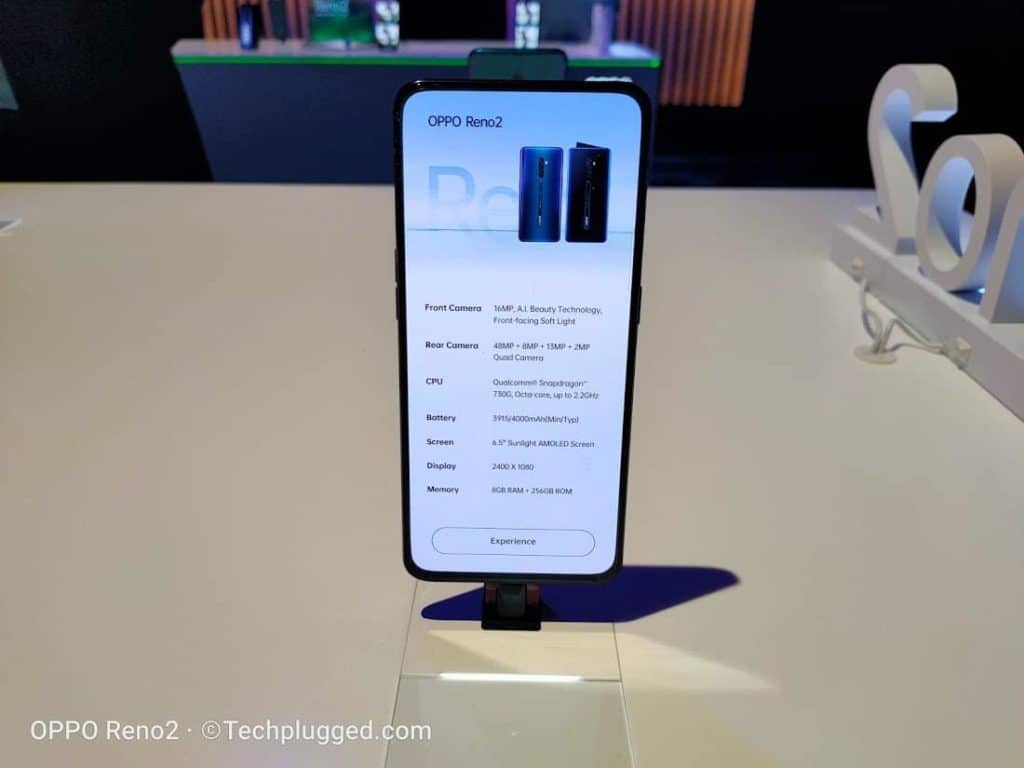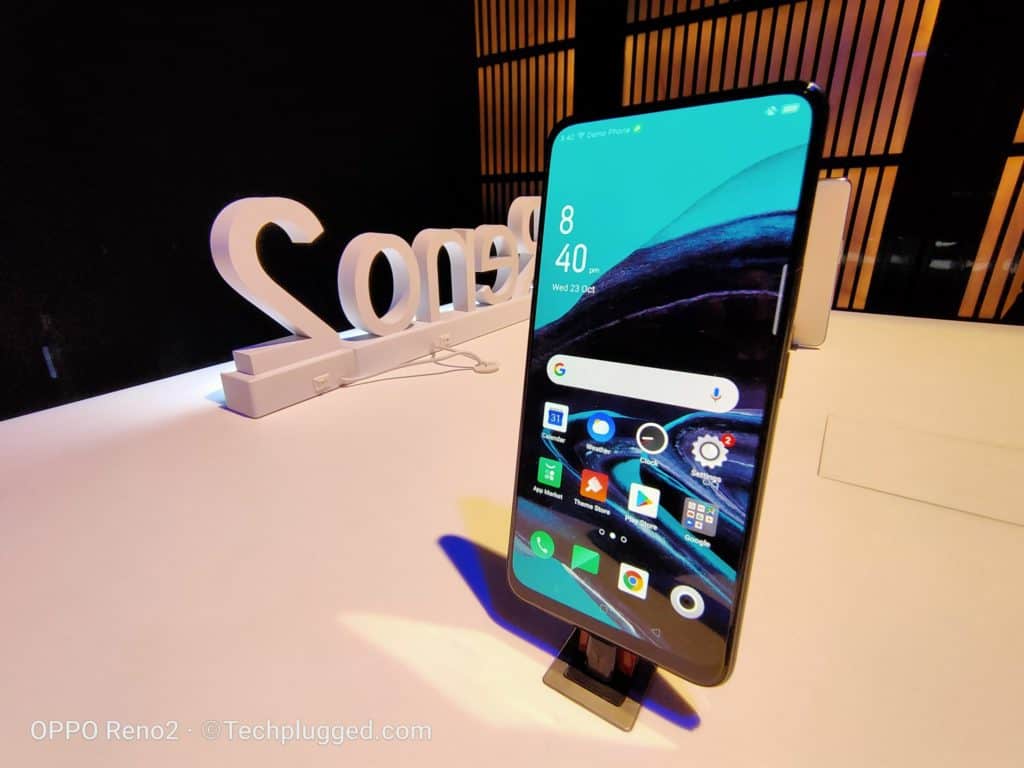What would you call an all-rounder mid-ranger, with a sleek design, sensible features and a super focus on cameras? The Oppo Reno2 is your answer. The experimental project of BBK Electronics has no dearth of R&D Funds thanks to the market performance of Vivo, OnePlus and Oppo, and the effort of these past few months is a clear indication that in today’s market, experimentation is the way forward. The Reno lineup has been around for a few months now, and when you see features like the shark fin and 20x zoom, the presence of a strong experimental spirit is evident.
Table of Contents
 REMEMBER THE SHARK FIN FROM OPPO RENO 1
REMEMBER THE SHARK FIN FROM OPPO RENO 1
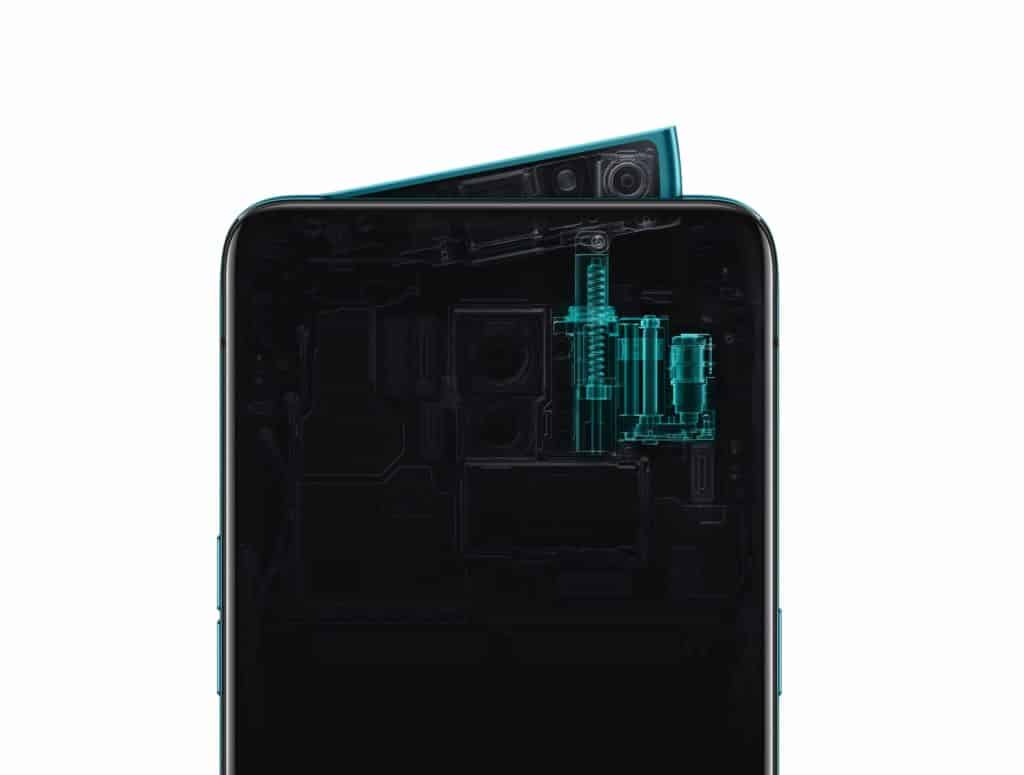
When you see the Oppo Reno2 specifically, you will see that Oppo has tried their best to include and amplify, all the features that were most appreciated on the first Reno smartphone. Compared to its predecessor, the Reno2 is a clear upgrade in many minute ways. Be it the new and improved Snapdragon 730G chipset, or the bigger battery, the Oppo Reno2 looks like a more refined and finished product than its sibling, and that in itself is good news for the Reno project going forward.
Let’s dive right into the review and take a closer look at the new Oppo Reno2 smartphone –
What do you get in the Box?
The first process of any smartphone review is the unboxing, and in case of fo the Oppo Reno2, the unboxing is quite chic a bloc. Firstly, the box itself is quite thick and sturdy, complete with a sleek matte finish, which gives the overall package a suave and premium feel. Inside, we have the main handset itself, the wall adapter which can deliver the full 20W of VOOC Flash Charge 3.0 to the phone.
We also get a pair of earphones that resemble the Apple EarPods in many ways, but end in a 3.5mm, since the Oppo Reno2 still comes with the good old 3.5 mm headphone jack.
We also get a leather-like back case, which may not be premium, but definitely looks the part, and covers all the important areas of the device. This way you are all geared up to start using your shiny new phone without an extra trip to a store.
Design – Bold and Consistent
Since the Reno series has been more of an experimental lineup, Oppo has taken its design to a rather bold spectrum here. We have the deep, dark glass surfaces on the back, complete with a signature Reno oval on the back, some recognizable branding, and often a slightly elevated, color-accent bump to keep the generally flush cameras safe from scratches. On the Reno2, we have an additional decal around the Reno oval, which makes it look like an led shining through it.
The camera array sits absolutely flush underneath the gorilla glass back panel. This removed the inconvenience of the camera bump, but on the flip side, the glass itself attracts a lot of fingerprints, so it’s advisable that you clean the glass on top of the camera array before going for the shots.
The build of the Reno2 also includes aluminum for the middle frame, which is adequately thick and sloped properly to make for a comfy in-hand feel. The lack of chamfers means that the grip won’t be spectacular but tits something that the case will improve.
The shark fin pop camera returns with a more sturdy and reassuring feel. It is clear that the team at Oppo has put a lot of time into refining this shark fin and it looks like this time, the mechanism is not just funky, but deadly strong too.
The display itself is the all-screen kind. Yes, we do still have a marginal bezel, but the absence of any cut-outs or notches means that the display essentially runs end to end. The optical under-display fingerprint reader has also been conveniently hidden away under the AMOLED panel. The reader itself is both snappy and very reliable.
Controls and Connectivity
The Oppo Reno2 comes with a pretty standard set of control buttons. We have the quirky yet strong shark fin pop-up camera, the volume rockers on the left, and the power button on the right. On the bottom, we have the USB 2.0 Type C charging port, the 3.5mm headphone jack, and the single-firing speaker. Keep in mind, that this speaker is the only speaker on the Reno2 device. The earpiece, which is nicely concealed in the top bezel, does not double as a powered speaker either. While all this does look like a pretty standard set, the control buttons are rather flimsy to the touch and not top quality. Oppo could have improved the quality and sturdiness of their control buttons because they start to feel very mushy after a while.
The connectivity package is a pretty standard affair as well in the Reno2. For instance, the Reno2 has an FM radio receiver. Another new addition is the microSD card slot. Keep in mind, however, that the SD card slot is actually the hybrid solution, which means that you have to choose between memory expansion or a second SIM.
For local connectivity, there is dual-band Wi-Fi ac. And last, but not least a pretty versatile positioning setup, including A-GPS with GLONASS, GALILEO, and BDS support.
Display – 6.5 inches and uninterrupted
The Oppo Reno2 features a 6.5 inch 1080p AMOLED display with no notches or cut-outs. The display panel is great all around. Size-wise it offers a small but still noticeable upgrade over the original Reno, bringing the Reno2 closer to the flagship Reno 10x zoom instead. All of the extra pixels have been added in the vertical direction, which means the Reno2 isn’t wider than its predecessor but does offer a wider and consequently trendier 20:9 aspect ratio.
We have a native resolution of 1080×2400 pixels, which adds up to around 401 PPI, which is crisp and top-notch.
The brightness is good, but not the greatest, on the Reno2. With a max brightness of 509 nits, the Oppo Reno2 gets the job done, but is often hampered by direct sunlight falling on the display.
Color representation is also not the best on the Reno2. We have two color modes – gentle and vivid, with the former being the best of the two. The white point settings are pre-set and lean towards a bluish tinge rather than the pure white that you would expect. There is no provision to manually set the white point, which means this is the best you are going to get. So, if you are someone who likes punchy colors on the display, it’s better to switch to a vivid color profile.
Performance
Coming to performance, the Oppo Reno2 is powered by the new Snapdragon 730G chipset. On the CPU side of things it has two Kryo 470 Gold (Cortex-A76) cores, clocked at 2.2 GHz, and another six Kryo 470 Silver (Cortex-A55) ones, working at 1.8 GHz. They are all built on an 8nm LPP node and hence pretty power efficient. Both also have the same Adreno 618 DSP. But the one on the 730G is clocked 50 MHz higher and sits at 550 MHz.
Qualcomm is marketing the new SD730G chipset as a ‘gaming’ grade chipset, but let’s take a closer look at the hierarchy. The Snapdragon 730G is technically the fourth chipset in the 700 series. But, in reality, just like the SD712 was nothing more than a beefed-up SD710, the same is true with the base SD730 and the 730G. The marketing strategy for the 700 series of chipsets is that this family of chipsets offer the latest developments in mobile processing, without burning a flagship-sized hole in your wallet. So far, it looks like the strategy seems to be working for Qualcomm and the Reno2 is one of the best examples of the new chipset in action.
It is worth mentioning that the Oppo Reno2 features a ‘performance mode’, which, other than the fancy name, offers nothing too great in terms of real-life performance, and the benchmark scores, which are not very significant when it comes to real-world usage of the device, indicate that even with the ‘performance mode’ turned on, the difference in actual performance is marginal to the point where you might not even notice the change.
That said, the Oppo Reno2 definitely proves itself to be a reliable performer, getting past regular to moderately demanding tasks with ease, and even delivering a more than decent gaming performance.
Camera – The definitive party piece
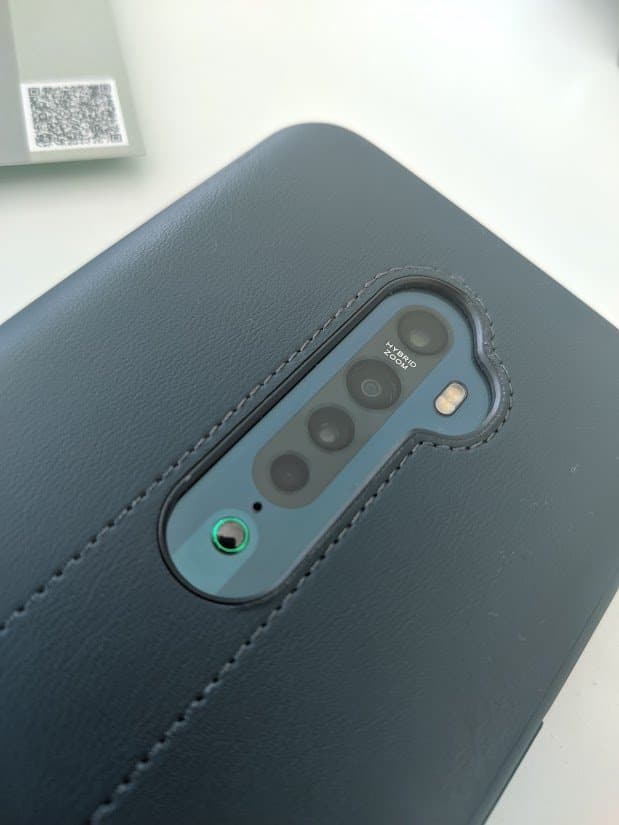
Oppo has stressed from the beginning, that their main area of focus is mobile photography, and the Reno2 is another experiment in creating the perfect camera phone.
That being said, though, the major showpiece that is Oppo’s 5x optical periscope camera is notably missing. What remains, however, is a set of surprisingly well-thought-out snappers. First, there is the main 48MP, f/1.7 26mm, 1/2.0″, 0.8 µm unit. It is the same you find on the original Reno and the 10x zoom. Unlike the former and like the latter, it now has OIS. No Laser AF, though, which might be worth noting.
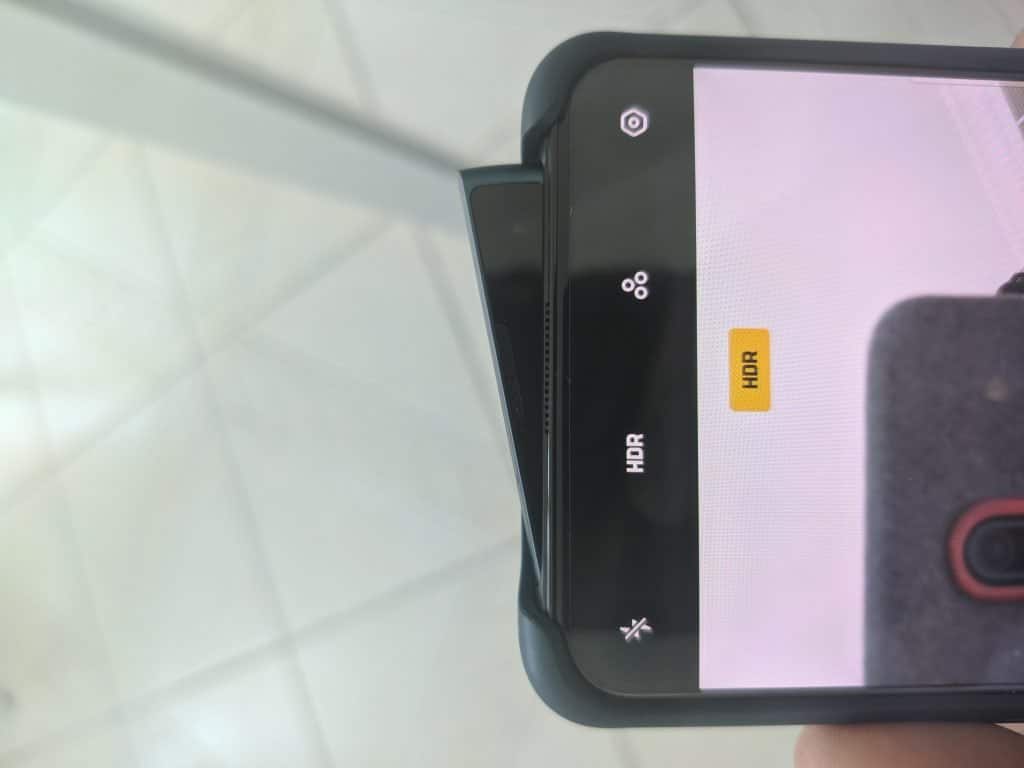
Taking the place of the famous periscope module is a more traditional 13MP, f/2.4, 1/3.4″, 1.0µm telephoto with 2x optical zoom and 5x hybrid zoom.
Next, we have the 8MP, 13mm, f/2.2, 1/3.2″, 1.4µm ultrawide has autofocus as well. This is a lens that you don’t find in most smartphones today, and it looks like Oppo has added it in to enable users to take great high-detail close-up shots.
Finally, we have the 2MP supplementary camera, which is a monochrome black and white unit – f/2.4, 1/5″, 1.75µm. While photography from this lens is probably very 2002, but the real use of this lens is in creating some incredible portrait mode effects as well as color isolation filters.
Coming to the image quality, the 48MP Sony IMX586 sensor uses a Quad-Bayer array and pixel binning – it combines four adjacent pixels into one. The resulting image is reduced to a higher-quality 12MP shot. If these shots are taken in the day, the result is nearly flawless, and some photos are even drool-worthy. There is plenty of detail, high dynamic range, most accurate colors, good contrast, and overall very nice processing. The photos have just the right amount of sharpening applied so detail is highlighted, but there are not too many sharpening halos.
However, there are some cases where the image did appear a bit grainy, which you will see if you really go nitpicking and pixel peeping. Otherwise, the photos are definitely something you can expect from a proper flagship device.
The more interesting part of the camera setup is on the front. Oppo has been trying to portray the Reno2 as a ‘creator’ device, which is why they have given the front camera, the software love that has gone into the rear cameras. The 16 MP, f/2.0 unit might be alone on its motorized pop-up “shark fin,” but that didn’t stop Oppo from translating the “O6” filters on this site as well. While a b/w sensor would have been a welcome addition to the front camera Setup, the presence of AI beautification and HDR capture means that the end result is great.
Beyond portrait mode and color filters, there is also a pretty powerful beauty mode. You could just leave the AI Beauty algorithm to do its work by default or go in-depth, tweaking your complexion MMO character-creator style.
Battery Life
Oppo has managed to fit in a bigger battery into the Reno2, albeit with the addition of 9.5 mm of thickness and new grams of weight. The battery unit is rated at 4000 mAh, which is clearly more than the Reno phone, which features a 3765 mAh unit. This is also similar to the 4065 mAh unit on the flagship Oppo Reno 10x zoom.
What gives the Reno2 the edge, however, is the new Snapdragon 730G processor. As far as battery endurance is concerned, the important bit is the efficient 8nm development process Qualcomm uses for this particular silicon. And since this is a mid-range chip we are talking about, most of that extra thermal and power headroom has gone into optimizing power consumption over the Snapdragon 710 inside the original Oppo Reno.
While battery life as such is subjective, dependent solely on the individual user, the charging on the Oppo Reno2 is something that will remain constant for us all. The VOOC Flash charging puts on an impressive display getting the Reno2 from 0 to 40% in just about 30 minutes. A full charge takes about 85 minutes. This is noticeably speedier than your typical Quick Charge and its an 18W max rating.
Conclusion
Overall, the Oppo Reno2 is a clear step up from the previous Reno iteration and it is obvious where Oppo is going to improve in the days to come. While the last Reno lineup felt more like a polished working prototype, the Reno2 feels a lot more complete and market-ready, with scope to improve drastically in the future.
The competition in the mid-range segment, however, is cutthroat, and with devices like the Redmi K20 Pro falling in the same bracket, but featuring the Snapdragon 855 chipset,
So, all in all, if you are in the market for a camera smartphone that has a shark fin camera, go for the Oppo Reno2, but otherwise, you should probably take a look at the competitors as well.

 REMEMBER THE SHARK FIN FROM OPPO RENO 1
REMEMBER THE SHARK FIN FROM OPPO RENO 1